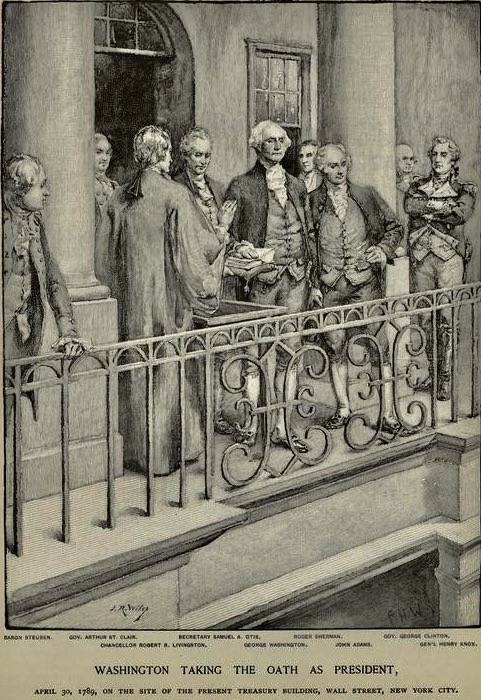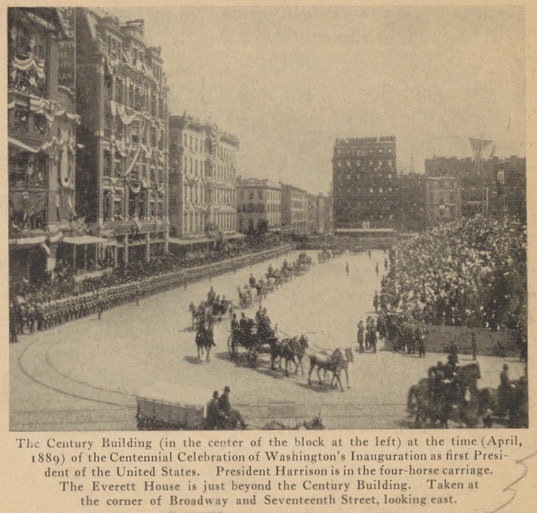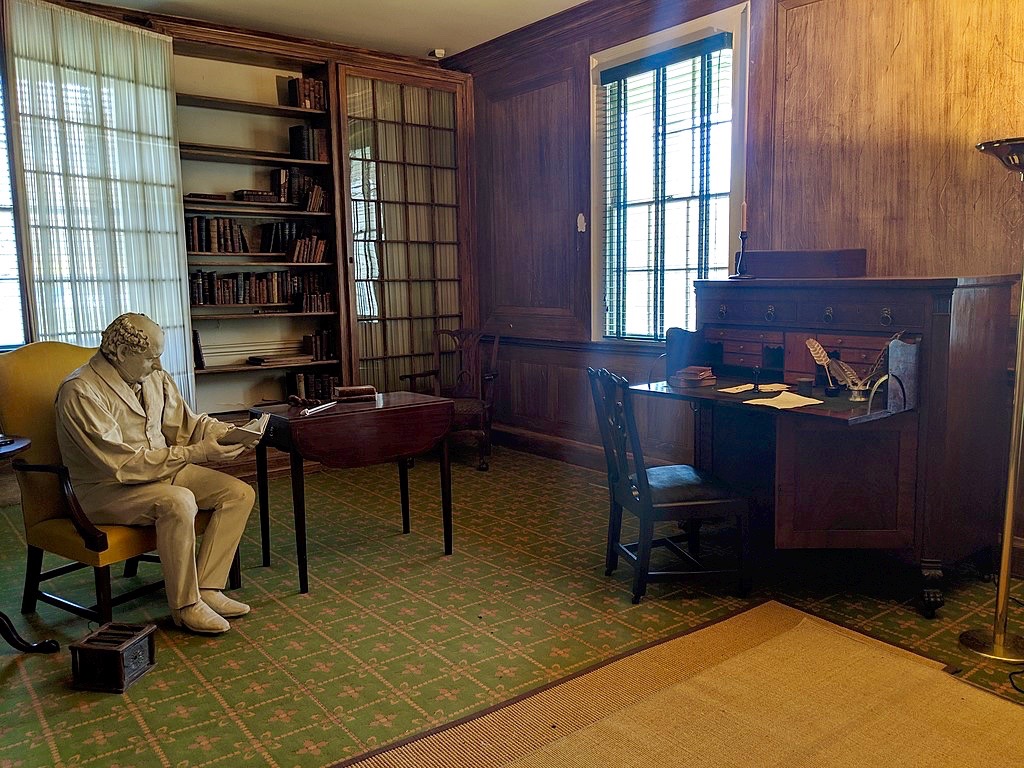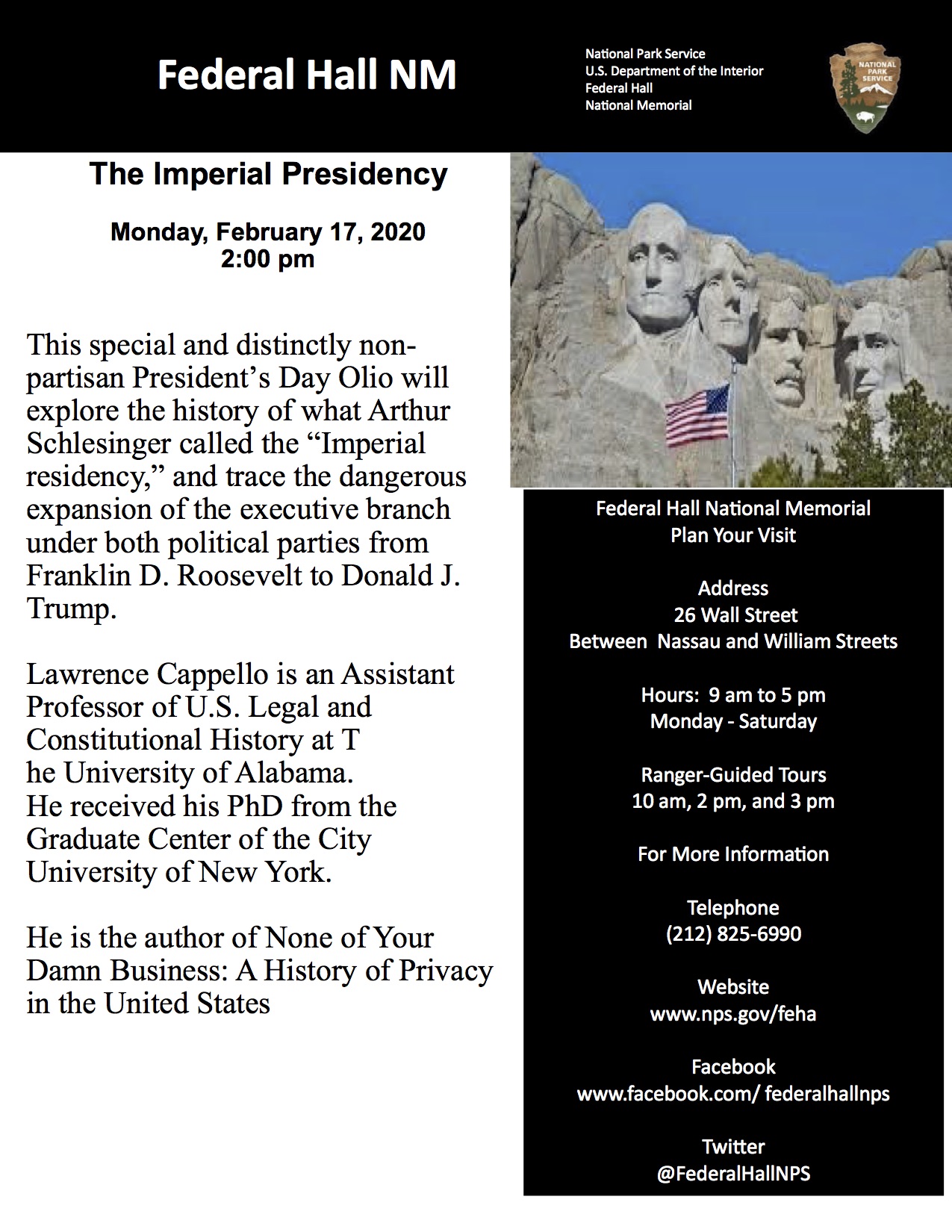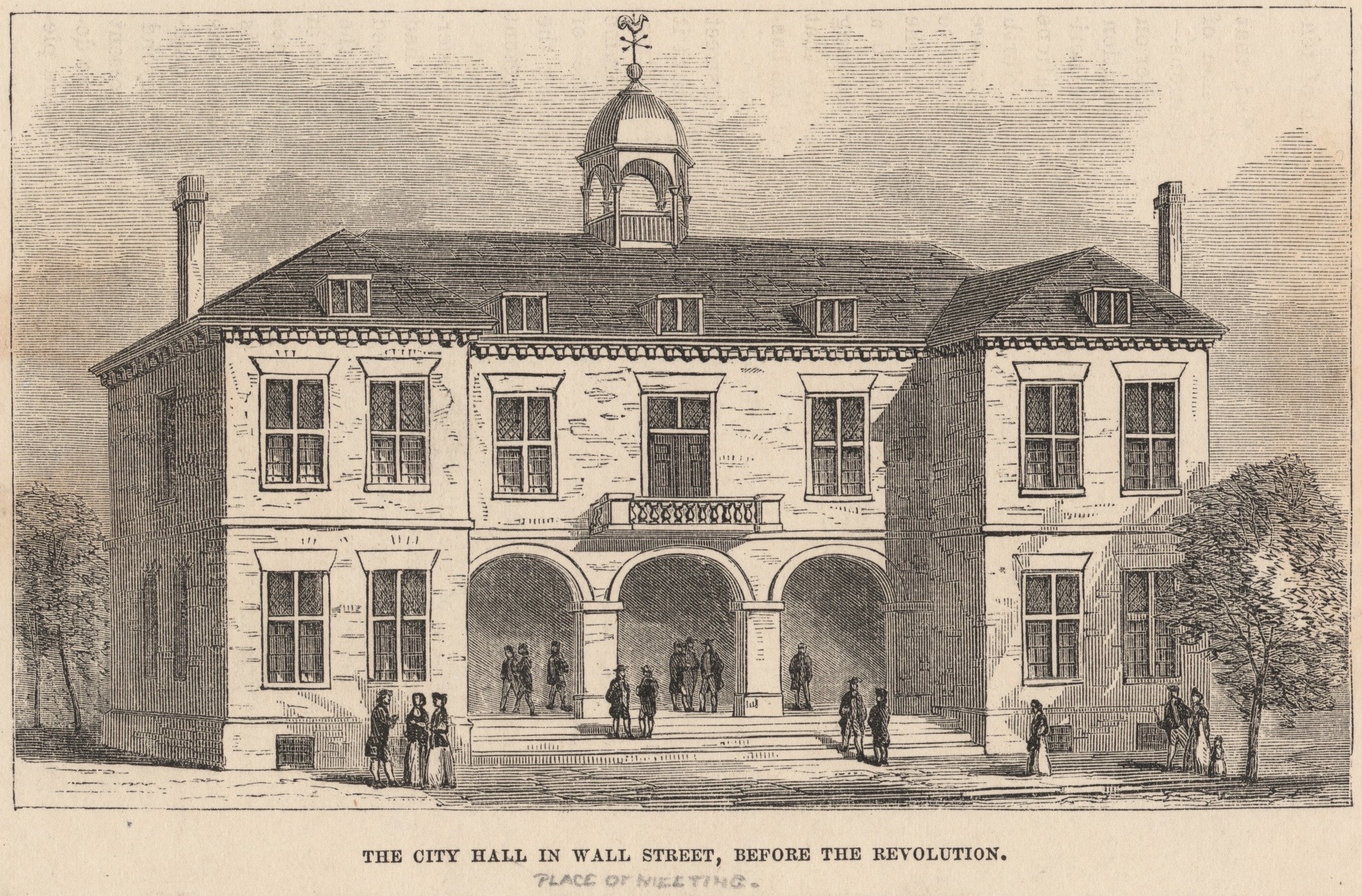This past November I received an email from Bob Crothers, an independent scholar who had my article in the Journal of the American Revolution about Isaac Roosevelt and was reaching out to tell me of his research relating to New York State before, during, and immediately after the Revolution. Bob received his B.A. in Economics from Brown and M.B.A. from Harvard Business School before a long career on Wall Street and Madison Avenue. Now retired, he is pursuing his interest in History full-time researching and presenting on various subjects. Among other topics, Bob has an interest in the New Deal Era mural in the Poughkeepsie post office depicting the 1788 New York State Ratification Convention that took place in that city. Bob and I finally met in person last month when he came to Federal Hall on Presidents Day. Last week he traveled to Washington D.C. to conduct research on the post office mural. Here is his guest article on the experience.
By Bob Crothers
 I’m preparing a talk to be given in the fall of this year on the debate and compromise of the New York State Ratification Convention. This Convention took place June 17-July 26 1788 in the then-third Court House of Poughkeepsie, which burned down in 1804. In November 2019, the day after Thanksgiving, I visited the only memorial to this long-forgotten event. That memorial is a late 1930s mural located on the second floor of a Depression Era-built Post office painted by a New Jersey artist named Gerald Foster.
I’m preparing a talk to be given in the fall of this year on the debate and compromise of the New York State Ratification Convention. This Convention took place June 17-July 26 1788 in the then-third Court House of Poughkeepsie, which burned down in 1804. In November 2019, the day after Thanksgiving, I visited the only memorial to this long-forgotten event. That memorial is a late 1930s mural located on the second floor of a Depression Era-built Post office painted by a New Jersey artist named Gerald Foster.
The mural shows 23 of the 67 delegates to this convention and focuses on a handshake between Alexander Hamilton, the most well known Federalist, both state and nation-wide, and Governor George Clinton, probably the most dedicated Anti-Federalist in the nation at this time. Clinton was the first non-royal New York governor; he would go on to serve twenty-two years in the post; he also served as Vice-President in Thomas Jefferson’s second term. Clinton subsequently died in office as James Madison’s first term Vice-President in 1812.
Two more dedicated political enemies than Hamilton and Clinton (perhaps excluding Hamilton and Burr) would be hard to find. Governor Clinton, first elected in June 1777, had done a remarkably effective job of protecting the state’s interests and keeping taxes low, taking full advantage of the great harbor growing in NYC.
The mural memorializes the July 26, 1788 breakthrough in the Federalist/Anti-Federalist debate and stalemate threatening to keep New York State from ratifying the U.S. Constitution. The stalemate was finally broken when the prominent Anti-Federalist Melancton Smith, a one-time sheriff of Poughkeepsie but at the time a NYC resident, brought his mentor, Governor Clinton, to an agreement with Federalist Alexander Hamilton, to ratify the Constitution. The key to this was the pledge that the first American Congress, set to meet in NYC would pass, in its first assembly, both 1) a Bill of Rights and 2) the promise of another Constitutional Convention within two years. This handshake ended by far the most difficult negotiation between these first two identifiable political parties in US constitutional history. Under those terms, New York became the eleventh state to ratify the US Constitution.

Foster’s mural as depicted on a 1987 United States Postal Service special cancellation commemorative card
As I studied the mural, it seemed to me unlikely that the painter would have known of this history and thus been able to choose the participants depicted in this painting, But who could have advised and directed him? I had a candidate in mind, Franklin Delano Roosevelt, but needed to find a way of gaining more information.
I knew FDR to be a serious historian, particularly of his own Dutch Colonial family and of Dutchess County, where his branch of the family had resettled in the early 19th Century, following the arrival and settlement of his family in New York City in the 1600s.
I enlisted two potential resources: 1) the FDR Presidential Library in Hyde Park NY to trace FDR’s involvement and 2) the Smithsonian Institution’s Archive of American Art in Washington, DC, which holds the papers of the artist, Gerald Foster.
The FDR Presidential Library suggested I send them an email outlining my interest, which would be assigned to one of their several archivists, who would respond to me within two weeks. Precisely two weeks later, to the day, I received a healthy packet of materials from Mr. F., my archivist, which contained two particularly interesting items, The first was a copy of a manuscript letter dated May 28, 1939 from Foster to the head of the U.S. Department of the Treasury’s Section of Fine Arts (“the Section”), the funder of the mural, pertaining to ”the subject matter and the characters portrayed” in his Ratification Mural. One sentence reads: The idea for this group was suggested by Pres. Franklin D, Roosevelt. Another reads: Authentic old portraits were found for eighteen (out of 21) of the figures shown.
The second item was a copy of a typewritten letter from the chief of the Section of Fine Arts to the President of the United States, dated April 29, 1939, dealing with a jury of local Poughkeepsie arts experts, including a “Miss Reynolds” concerning the approval of designs for several Poughkeepsie post office murals. A sentence reads: “Since Miss Reynolds is not in agreement with the jury, and as there are four or five designs which appear to us to be of merit, I would appreciate very much your reviewing the designs.”
So FDR was clearly involved in this mural development and there was a Cherchez La Femme individual named Reynolds making trouble. Shades of Alexander Hamilton’s affair many years earlier! (Further research turns up many references to Miss Reynolds as FDR’s great friend and fellow historian at the Dutchess County Historical Society, Helen Reynolds. Mystery solved!)

Bob Crothers’s work station at the Archives of American Art as he went through microfilm researching Foster’s mural, March 2020
This past week, I explored the painter’s side of the occasion and found several interesting references in the microfilm of Gerald Foster’s papers at the Archives of American Art in Washington D.C. The first was a typed memo describing Foster’s recollections and personal details of his meeting(s) with FDR on this and two other, less significant, murals done by the painter. Another was a handwritten note on the verso of an unidentified sketch noting FDR’s involvement in the details of its preparation. And lastly there is the local Poughkeepsie newspaper’s page one announcement on May 18, 1938 of the Ratification mural’s dedication.
QED, the Ratification mural in the Poughkeepsie Post Office was conceived and directed by our then-president, Franklin Delano Roosevelt, aided by his fellow Dutchess County Historical Society correspondent Helen Reynolds, and executed by muralist Gerald Foster in 1937/38.
